Canon PowerShot S3 IS Review
Canon PowerShot S3 IS
Superb image quality, tonnes of features and a top notch lens - what more could you ask for?
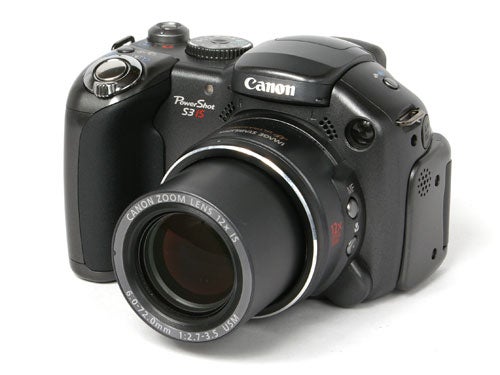
Verdict
Key Specifications
- Review Price: £240.70
In Canon’s compact camera range, two models vie for top billing. One is the 10-megapixel PowerShot G7 that I reviewed just over a month ago, and the other one is this, the PowerShot S3 IS. While the G7 might have the advantage in resolution over the 6-megapixel S3, the latter features an impressive f/2.7 – f/3.5, 12x zoom lens (36 – 432mm equiv.) with Canon’s acclaimed optical image stabilisation system and ultrasonic focusing motor, as well as a wide range of other features that make it one of the most versatile cameras on the market.

Despite the fact that the S3 IS has been around for a while, it is still one of the most popular super-zoom cameras around. It currently sells for just under £250, which compares reasonably well with other similarly-specified models, such as the Fuji S9600 (£270), Kodak P712 (£255) and Olympus SP-500 UZ (£230) and Panasonic DMC-FZ7 (£185)
It has to be said, it’s a curious looking beastie. Although it has a generally SLR-like shape with a large high-level viewfinder and a chunky sculpted handgrip, it is covered in odd lumps and bulges, with controls scattered across its surface like acne on a teenager. I’ve heard some people describe it as ugly, and I can see their point, but I quite like the way it looks so I’m going to go with ‘functional’.
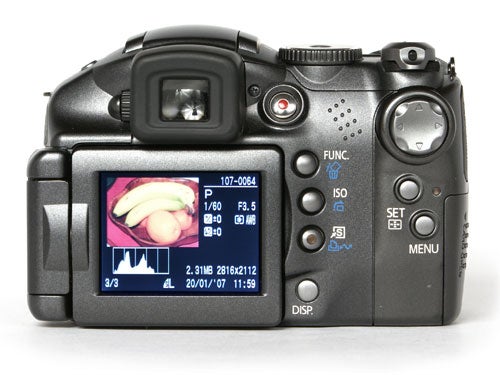
The body is made of the same tough plastic that clothes most of Canon’s A-series cameras, and is finished in a dark and slightly metallic grey that I would probably describe as slate. It feels very sturdy and well made, and the controls are easy to operate and well mounted. Measuring 113 × 78 × 76mm the S3 is quite a large camera compared to most compacts, and at 410g it is also quite weighty, but thanks to the generously sized handgrip, the sensible position of the controls and the space left on the back for your thumb, it is very comfortable to hold and never feels heavy. Overall balance is helped by the presence of four AA batteries inside the handgrip.
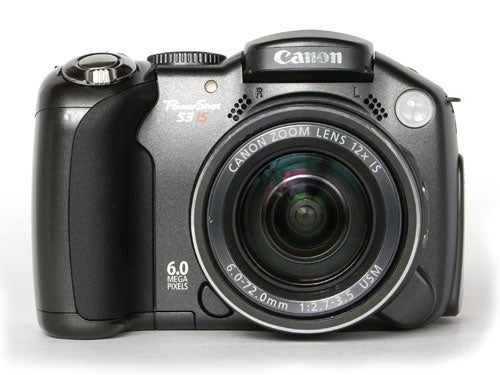
Whatever you think of its appearance, there’s no denying that it’s loaded to the gunwales with features. As well as its super-powerful but amazingly compact lens, it has a very useful 2in flip & twist LCD monitor, which with only 115,000 pixels isn’t terribly sharp, but does at least have an excellent anti-glare coating.
Main control is via a large mode dial on the top panel with no less than 11 settings, including auto, program, aperture or shutter priority and full manual exposure control, a custom exposure setting, the usual special programs of portrait, landscape, night scene and action, as well as panorama stitching mode and a scene mode setting with eight scene options including the unusual colour accent and colour swap modes.
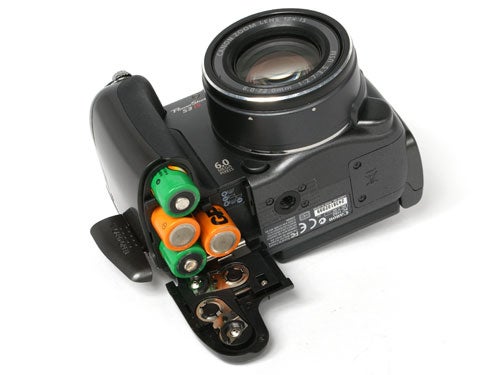
The S3 has the usual Canon ‘F’ button, which brings up an on-screen menu with all of the most frequently used settings, including exposure compensation, white balance, a selection of special colour settings, auto-bracketing, flash power adjustment, metering mode, and quality settings for both still photography and movie mode. I quite like the ‘F’ button system, but with more and more features being crammed into it and a fairly small and relatively low-res screen to view them on, it can be a bit fiddly to use.
There are external buttons for several other features as well, including ISO setting and a shortcut button the can be programmed with a range of settings, the default being image quality. I’m not particularly keen on the operation of these buttons, because they cycle through a long list of options. Due to their position next to the thumb grip area it’s quite easy to hit one by accident and change the picture quality from maximum to minimum, or the ISO from auto to 80 without noticing, and even if you do notice you have to spend a few seconds scrolling through the list of settings to get back to where you started. With a camera this complex, I would have preferred to see something like the rotary dial control on the G7.
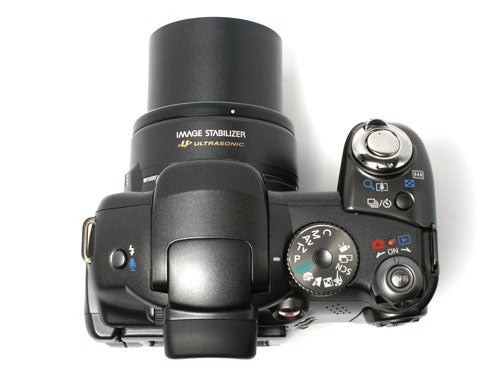
The S3’s movie mode is particularly good. It can shoot at the now obligatory 640 x 480 at 30fps standard, as well as 60fps at 320 x 240, useful for high-speed action especially with the ability to play it back in variable-speed slow motion. There is a separate start button for the movie mode, and pressing the shutter button during filming takes a still image without pausing the video recording. Also, and this is almost unique for a powered zoom camera, the zoom lens can be used while shooting video. The optical image stabilisation works in video mode, and sound is recorded in stereo via two microphones just above the lens.
General performance is also excellent. The camera starts up in about 1.5 seconds, which is very impressive for a super-zoom camera. As with most Canon cameras focusing is extremely quick and accurate, and works just as well in low light thanks to a built-in AF illuminator. However it is in continuous shooting speed that the camera really excels. At maximum image quality it can motor along at 2.3 frames per second, and keep it up until the memory card is full.
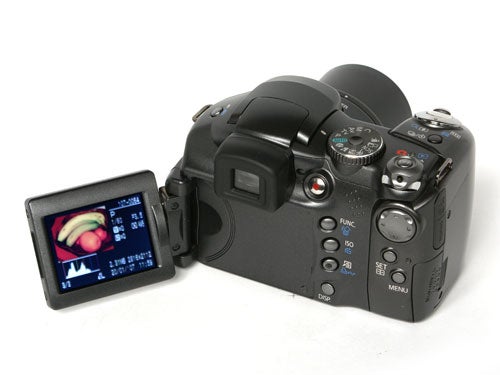
Maximum quality JPEG files are around 3MB each, about average for a 6MP camera, and a freshly formatted 1GB SD card is enough for approximately 361 shots, or seven minutes 49 seconds of video shooting. It’s worth noting however that the S3 does not support the new SDHC memory card format. Because it is powered by AA batteries, duration will vary depending on the type used, but on the whole battery life seems to be excellent.
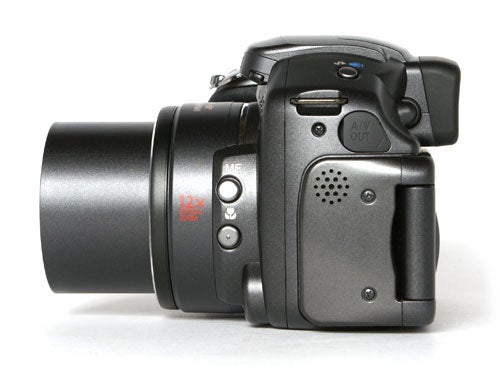
Image quality is also superb. Despite only having a tiny 1/2.5in sensor, pictures are impressively sharp and detailed, far more than I would expect from a 6MP camera. In fact I’ve seen 8MP models that can’t match the S3 for fine detail, and this is undoubtedly due to the excellent lens. It is pin-sharp from edge to edge at all focal lengths, produces minimal wide-angle barrel distortion, and its fast maximum aperture ensures good shutter speeds at long focal lengths. Combined with the fast AF it provides pin-sharp shots even of distant moving subjects.
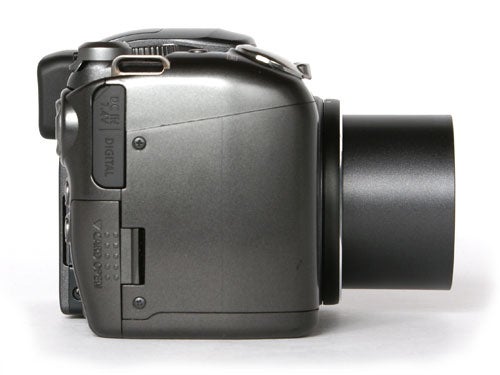
The acclaimed Digic II image processor again proves its worth with perfect colour reproduction and excellent dynamic range, although it does seem to like blowing out highlights in high contrast situations. The only major criticism I can find is a steadily increasing level of image noise from 200 ISO up to the maximum of 800, although 400 ISO images are still printable. All in all a superb performance from one of the best super-zoom cameras on the market.
”’Verdict”’
The Canon PowerShot S3 IS is arguably the best value super-zoom camera currently available. It combines great handling, ultra-fast performance and real photographic versatility with superior image quality and one of the best zoom lenses I’ve seen on a compact. It may look like a bag of spanners, but beauty is in the eye of the beholder.
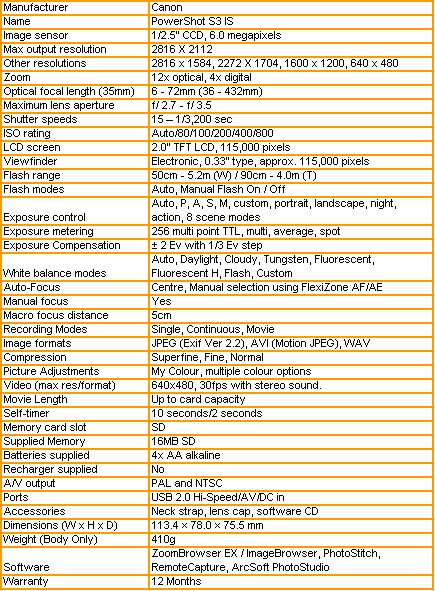
A range of test shots are shown over the next few pages. Here, the full size image has been reduced for bandwidth purposes, and a crop taken from the original full resolution image has been placed below it in order for you to gain an appreciation of the overall quality.
—-
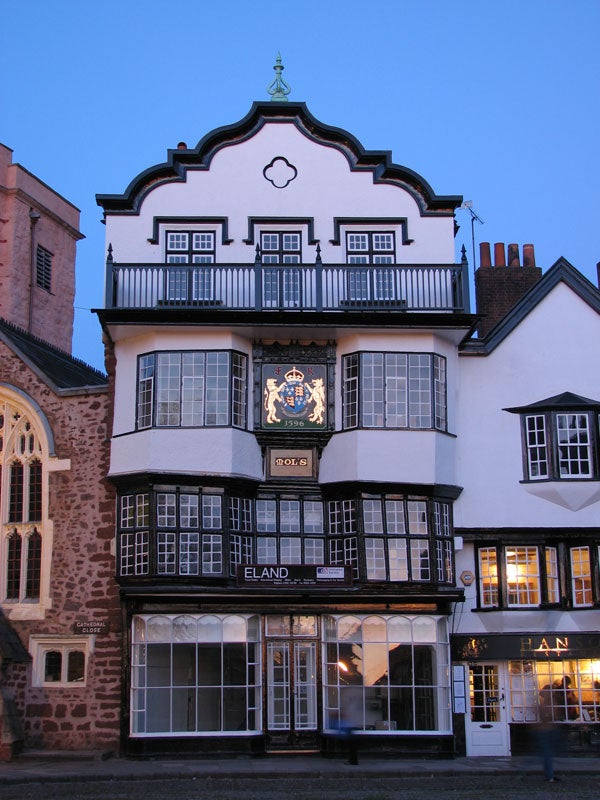
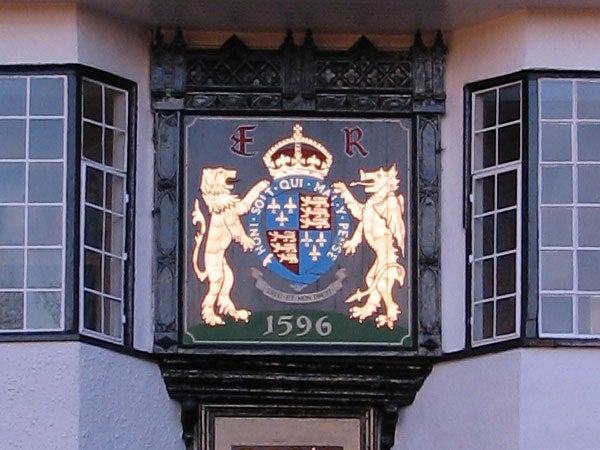
0.3 secs, f/3.2, ISO 80
I think I may have more photos of Mol’s Coffee House than anyone else in history, but it does look good in this silky-smooth 80 ISO shot.
—-
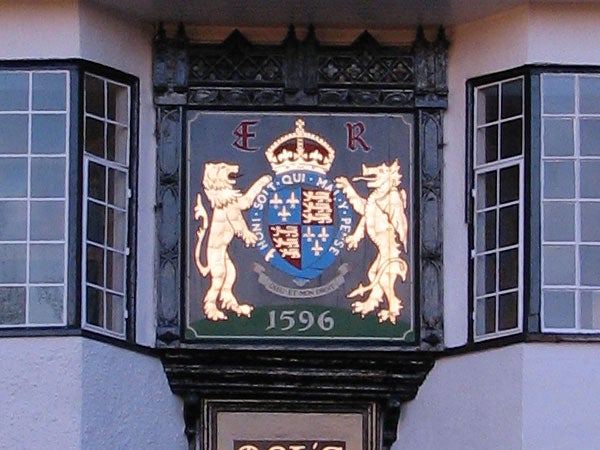
1/4 sec, f/3.2, ISO 100
At 100 ISO as well the image is very smooth, with no visible noise.
—-
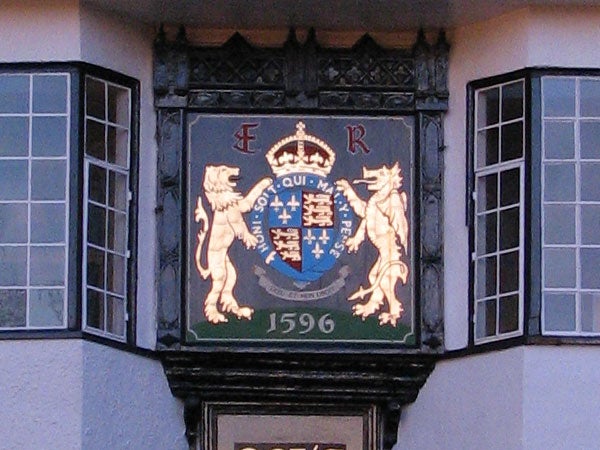
1/8 sec, f/3.2, ISO 200
Unfortunately, image noise is already creeping in at only 200 ISO, although it’s not too bad and the image is still quite usable.
—-
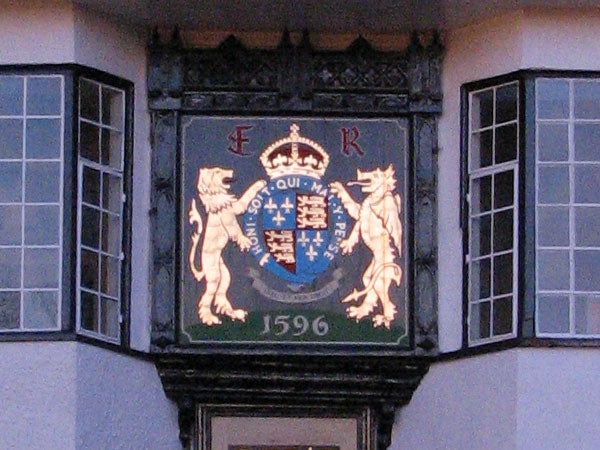
1/15 sec, f/3.2, ISO 400
At 400 ISO the image noise and colour speckling are now visible in all dark and mid-tone areas, but again it’s not too severe and the image is good enough to print, but not too big.
—-
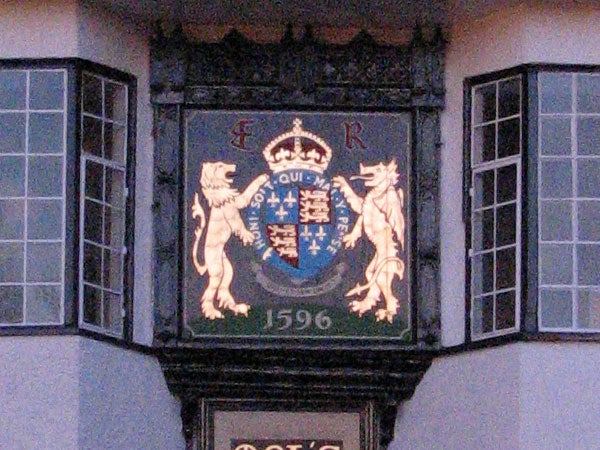
1/30 sec, f/3.2, ISO 800
At the maximum 800 ISO the noise levels are much worse and the image quality is much lower, losing a lot of shadow detail and colour saturation.
A range of test shots are shown over the next few pages. Here, the full size image has been reduced for bandwidth purposes, and a crop taken from the original full resolution image has been placed below it in order for you to gain an appreciation of the overall quality. The following pages consist of resized images so that you can evaluate the overall exposure. For those with a dial-up connection, please be patient while the pages download.
—-

I’m sure you’re all painfully familiar with this shot by now, but it’s such a good test of detail resolution.
—-
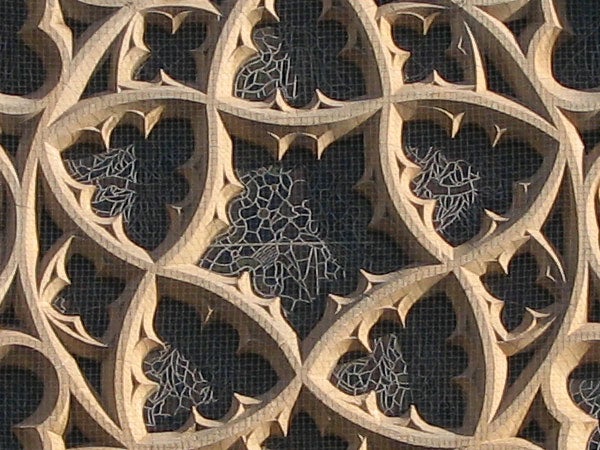
A 100 per cent crop from the centre of the image above shows a remarkably high level of detail for a 6MP camera with a 1/2.5-in sensor.
This page consists of resized images so that you can evaluate the overall exposure.
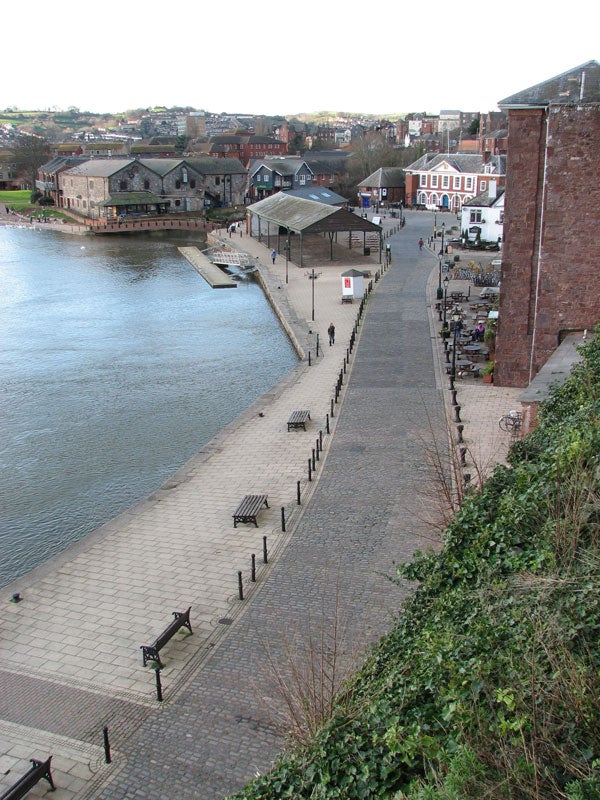
The S3’s lens has a wide end equivalent to 36mm, not really wide enough for panoramas, but not too bad.
—-
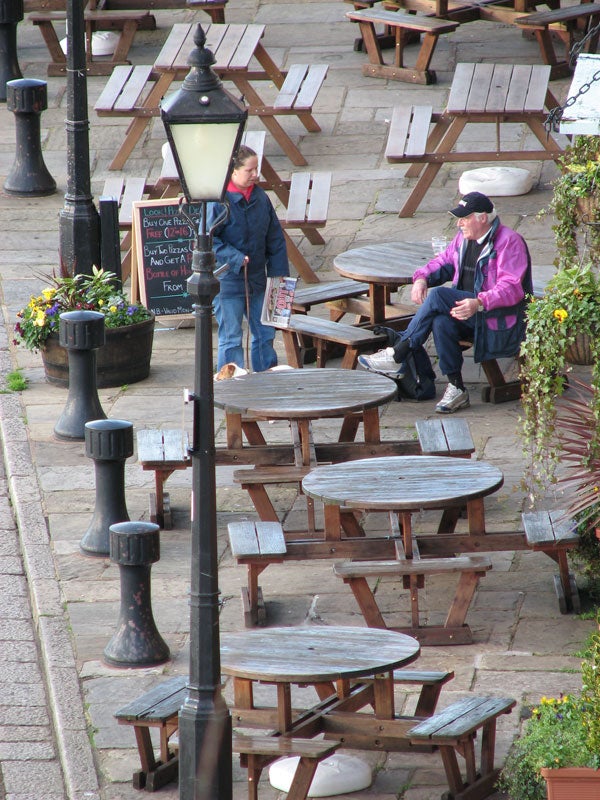
This is taken from the same spot as the wide-angle shot, and shows the remarkable power of the 12x zoom lens. The telephoto end is equivalent to 432mm. Note also that this was shot hand-held at 1/60th of a second. That IS system really works.
—-

The lens produces very little wide-angle barrel distortion.
This page consists of resized images so that you can evaluate the overall exposure.

KHAAAAAAAAN!!!!… oh, sorry, wrong movie. Nice 5cm macro mode though.
—-

The fast AF system and fast maximum aperture even at extreme telephoto allow you to zoom in close on distant moving subjects. There aren’t many non-SLR cameras that could have taken this shot.
—-
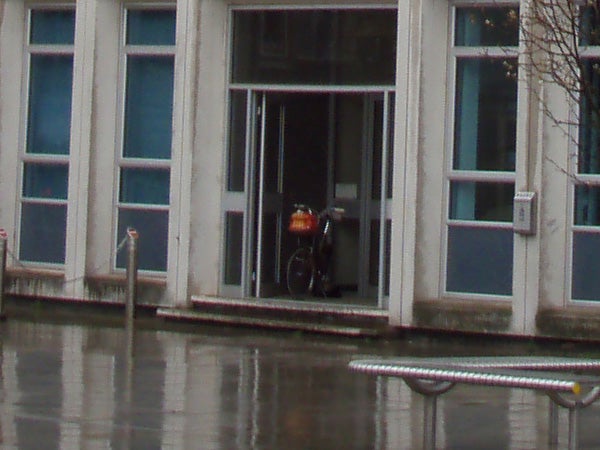
…or this one either. 1/400th at f/3.5, and a focal length equivalent to over 400mm.
—-
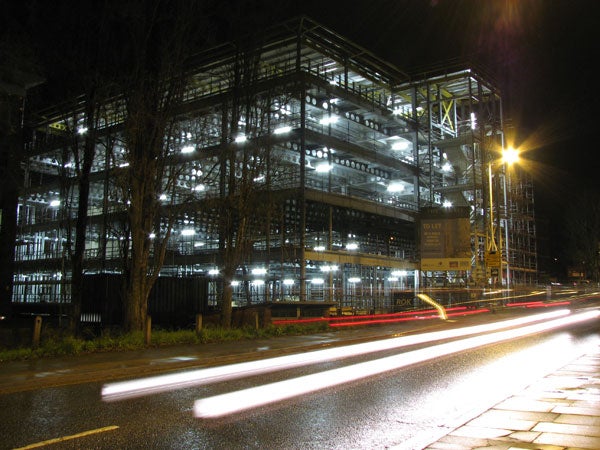
Full control over aperture and excellent low-light focusing make the S3 a great camera for creative photography.
Trusted Score
Score in detail
-
Value 10
-
Image Quality 9
Features
| Camera type | Super Zoom |
| Megapixels (Megapixel) | 6 Megapixel |
| Optical Zoom (Times) | 12x |
| Image Sensor | CCD |
| Image Stabilisation | Optical |
| LCD Monitor | 2 in |
| Flash modes | Auto Flash, Red-eye Reduction, Flash ON, Flash OFF |
| Video (max res/format) | 640 x 480 |
| Memory card slot | Secure Digital (SD) Card, MultiMediaCard (MMC) |

